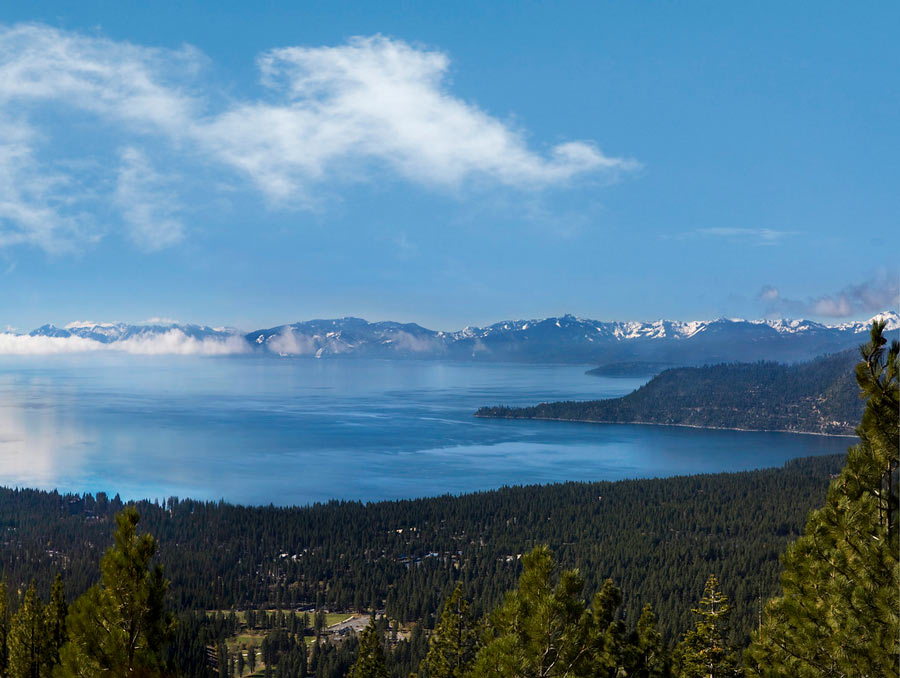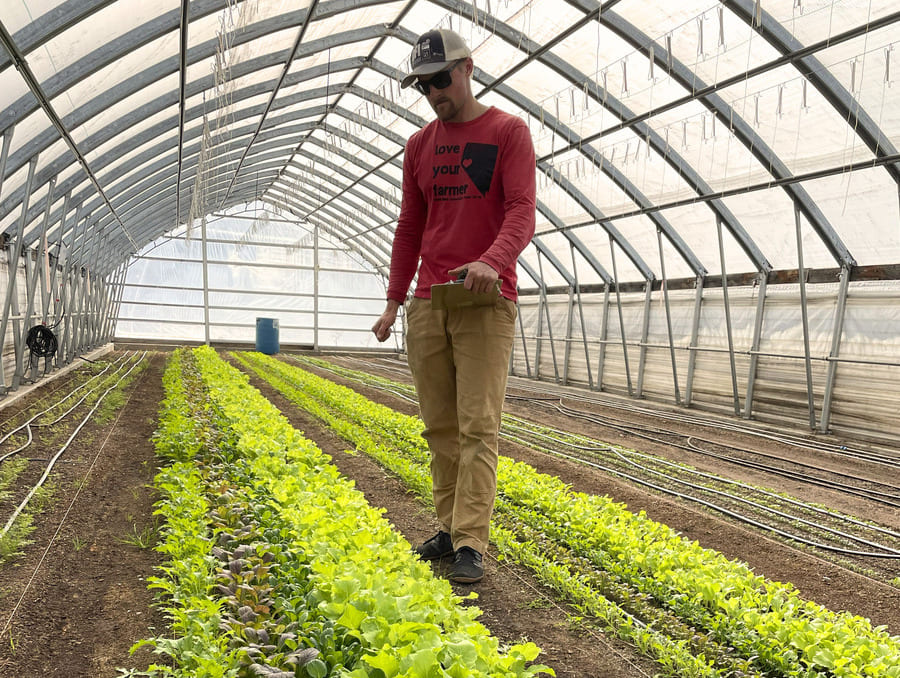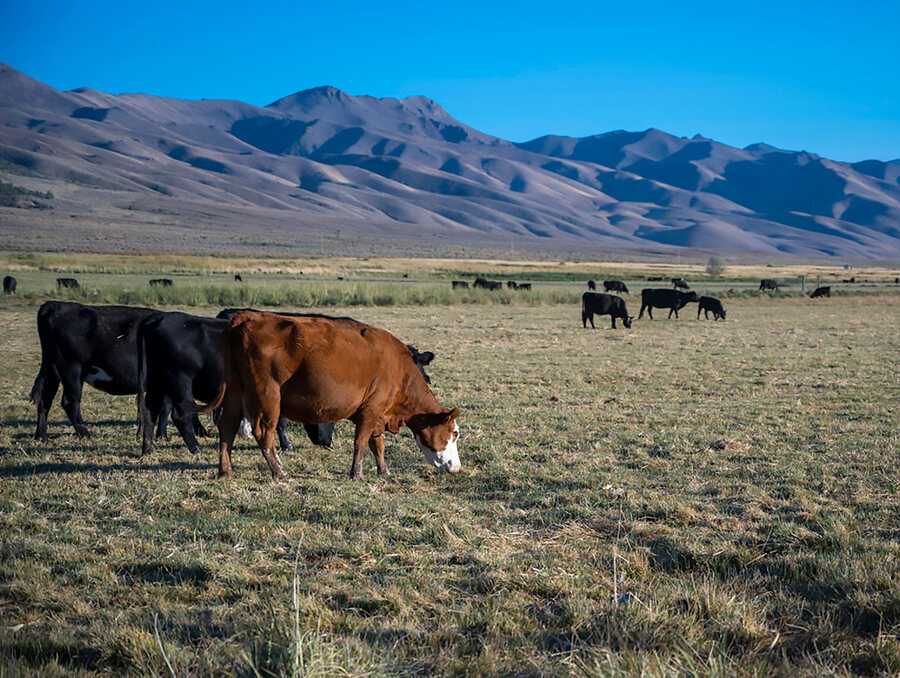Associate Professor in the Department of Geography Steph McAfee serves as Nevada’s State Climatologist. McAfee publishes quarterly climate reports and outlooks for the Nevada State Climate Office like the one below. She also publishes a monthly update about Nevada’s drought, which is shared through the Living With Drought program.
A wet winter and spring led to reduced drought in most of the state, and the El Nino may bring more wet weather in southern Nevada, where severe drought remains. Hot days are upon us in Nevada.
Temperature
The cool winter was followed by a cool spring and early summer, particularly in southern and eastern Nevada. On average, April was slightly cooler than normal across almost all of Nevada. However, there was a notable cool spell in early April. According to NOAA, 43 stations set or tied records for lowest ever April high temperatures. About 20 stations set or tied records for the coldest April low temperatures. May was a bit warmer than normal in the north, with near normal temperatures in the south. The Reno area, however, had a significant cold snap early in the month. On May 2, the high temperature was 49 F, about 20 degrees colder than normal. June was colder than normal, too. For example, in Las Vegas, there were only three days when the high temperature was above the 1991-2020 average.
Precipitation
If April was cold, there was at least a break from rain and snow. The vast majority of the state received less than half the normal April precipitation. Parts of Clark, Esmeralda and Mineral counties received almost no precipitation at all. Storms returned to northern Nevada in May. There was a significant storm in early May, showers mid-month, and more rain toward the end of the month. Central and southern Nevada generally had a much drier May, but there were scattered areas of above-normal precipitation. June was again wetter than normal across most of the state. Precipitation was especially heavy in western Clark County. The Mt. Charleston Fire Station got more than 2.5” of precipitation, including 2” in one day. There were scattered dry spots throughout the state, and a swath of below-normal precipitation from central Lincoln County across southern White Pine County.
The wet winter, followed by an overall cool and wet spring, led to significant reductions in drought. As of the June 27 U.S. Drought Monitor, most of the state was entirely free of drought or D0-Abnormally Dry conditions. However, D2-Severe Drought remained in southern Nevada.
Outlook for July – September
There are 50 - 60% chances that this summer (July - September) will be warmer than normal. I’d say it’s a nice change from the previous cooler-than-normal seasons, but I’m not a huge fan of hot weather. The summer precipitation outlook indicates Equal Changes of below- near-, or above-normal precipitation. This is a common, if frustratingly uninformative, summer forecast for Nevada. Since the last quarterly report, an El Niño has developed, and the Climate Prediction Center expects it to strengthen into the fall and winter. There is a better than even chance that the El Niño will be a strong one. For most of the state, El Niño has little influence on autumn and winter precipitation. However, outlooks for the late fall, winter, and early spring are leaning wet for southern Nevada, consistent with the El Niño.
In depth – 100 F+ days
Summer is the season of hot weather. There are many, many ways of judging what’s hot, but I think most of us can agree that a 100 F day is hot. Even for those of you in Las Vegas who get to experience, on average, about a month and a half of 100 F weather.
Nevada is large, stretching over almost 7 degrees of latitude, and topographically diverse. The lowest point in Nevada is less than 500 feet above sea-level, while the highest mountain tops 13,000 feet. The large ranges of latitude and elevation contribute to very different climates and very different timings and frequencies of 100 F days. Such high temperatures are very rare at the highest elevations. The Mt. Charleston Fire Station, near Las Vegas but at 7,460 feet has not clocked a single 100 F day since the station started collecting data in 1949. The SNOTEL station at Mt. Rose (8,801 feet elevation) has not even hit 90 F, though it only has a 40-year record.
On the other hand, the Harry Reid Airport in Las Vegas typically hits 100 F by late May. The earliest 100 F day there was May 5, 2017. This year the weather station didn’t hit 100 F until June 30, the latest on record. In Elko, Eureka and Tonopah, the first 100 F day of the year doesn’t typically happen until July, and the last 100 F day is usually later that month. And that’s if it hits 100 F; sometimes it doesn’t get that hot. In Winnemucca, Yerington and Reno, the first 100 F day is usually in early July and the last some time in August. But some years are different. Last year, it was 101 F in Reno on September 8, and in 2013, it hit 100 F on June 7.















